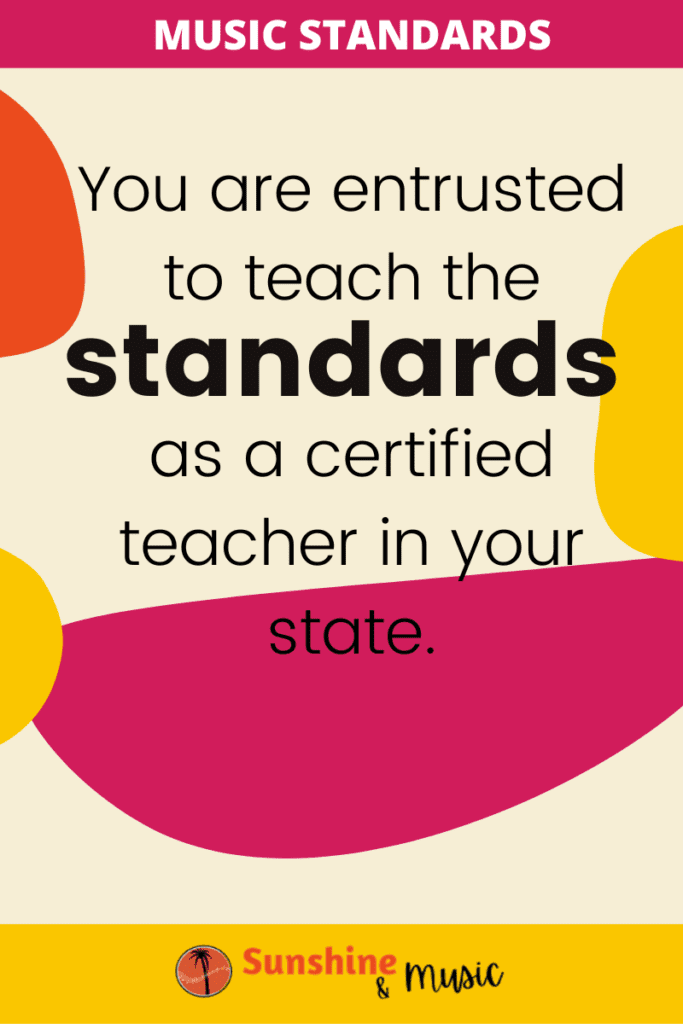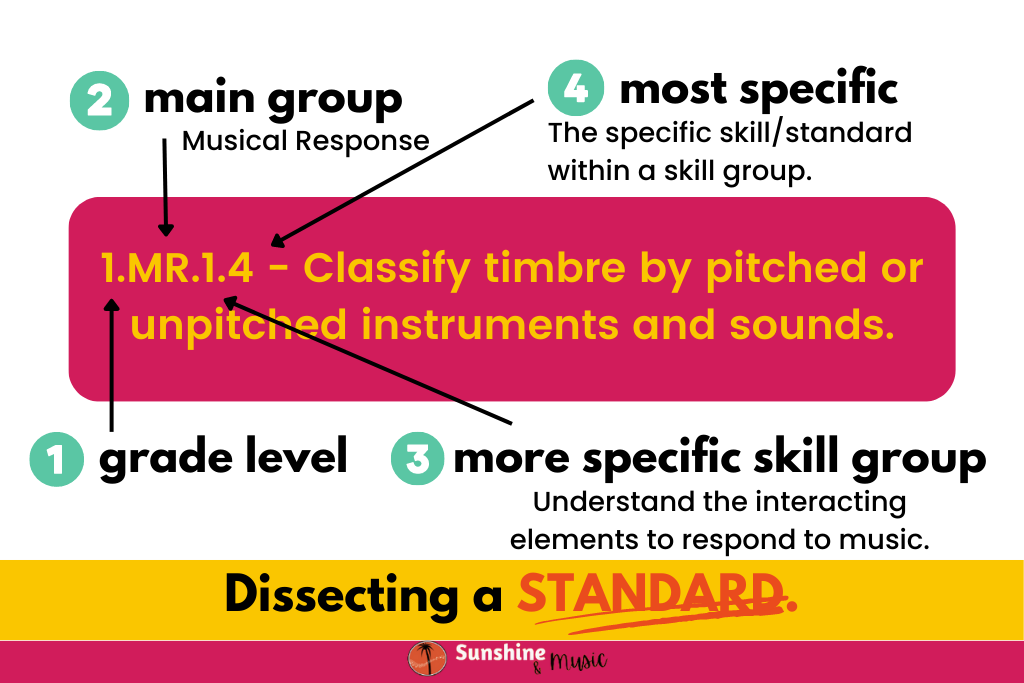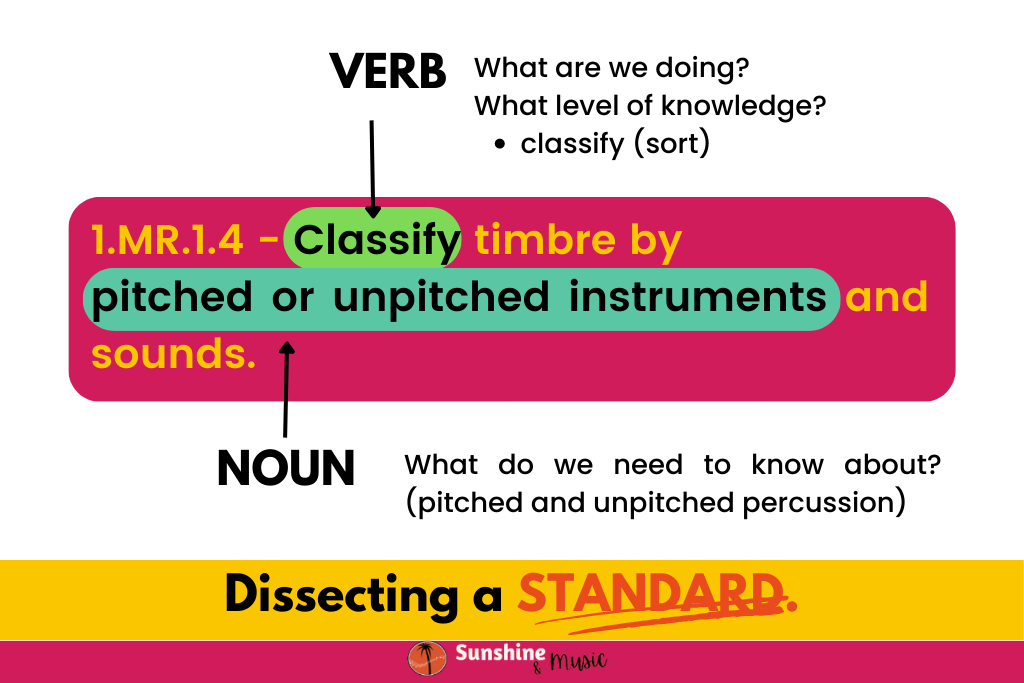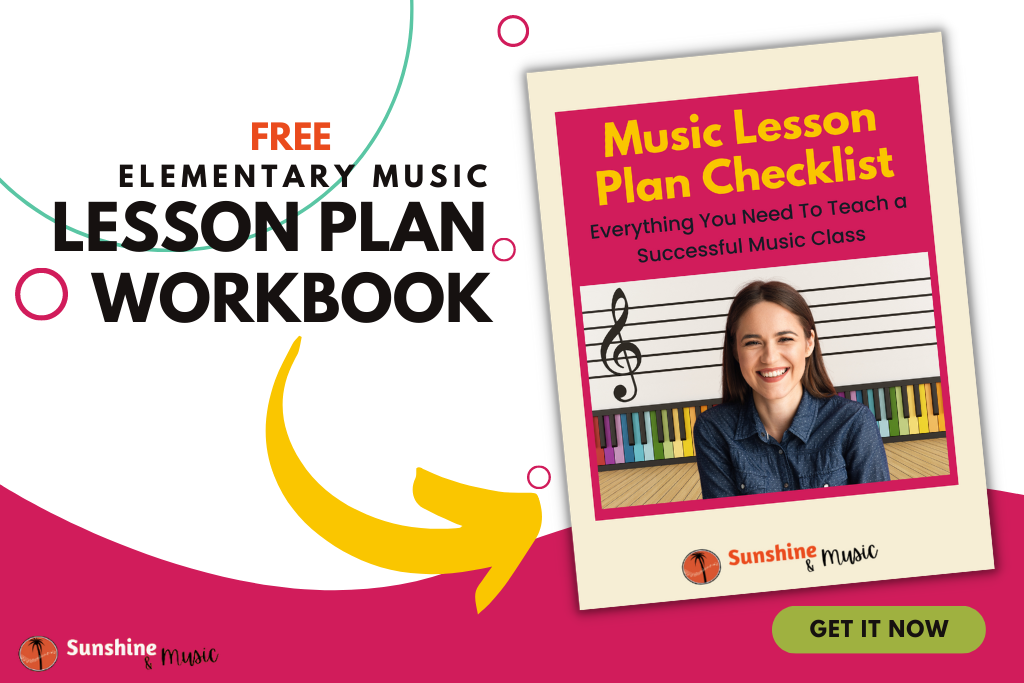The National Standards in Music provide a framework for what should be taught in music classrooms across the country. You may notice that your state benchmarks closely mirror many of the concepts outlined in the National Music Standards.
The National Music Standards serve as a starting point, but then each state must create their own standards for music. And these are the standards that our teaching is supposed to be based on.
So, you may be vaguely aware of the national standards. But you are hopefully pretty familiar with your state’s standards.
Even if you are not, you’ve come to the right spot! We are going to get you acquainted right here in this blog post.
Why Do I Need to Know My State Music Standards?
The short answer is, this is what you are entrusted with teaching to your students when you are hired as a certified teacher in your content area.
You can’t just create lessons and then simply hope that they match with one of your state benchmarks. Each state has quite a few standards for each grade levels, covering skills for creating, performing and responding to music.

If you haven’t cracked open your standards in while (or ever) because they have seemed a little daunting, I understand. But, let me assure you that with just a little bit of unpacking, you can become easily familiar with your state’s music standards.
Once you understand the music standards for your state, you can use them to build your music curriculum and design lessons that link to the framework provided by your state and NAFME (the National Association for Music Education).
Understanding the Music Standards
Aligning to your state music standards is critical to make sure that you are teaching students at the appropriate level for their grade. It will help make sure that your skills flow and build on each other year after year.
Furthermore, it will help ensure that as students move from school to school, there is still a basic framework for what skills they will learn within a given grade level.
So let’s dive in and take a look at a music standard from my state – North Carolina – and break it down to understand exactly what information it is giving us.
Music Standard Numbering System
1.MR.1.4 – Classify timbre by pitched or unpitched instruments and sounds.
Let’s take a look at the funky numbers and letters going on at the beginning of this thing.
- The first number tells us the grade level.
- The next part tells us the “strand” we are focusing on – the big idea.
- The next number zooms in even more to a specific idea. In this case – Understand the interacting elements to respond to music and music performances.
- Finally, we have the most specific section. The specific standard.

Did I lose you already? Yeah, lots of fancy words, but honestly all they are doing is grouping like objectives together. Know this hierarchy will help you find standards on the list, but honestly outside of that, it isn’t SUPER necessary to know this numbering system well.
Dissecting a Standard
Let’s take a peek at the actual words here and see what it is asking.
1.MR.1.4 – Classify timbre by pitched or unpitched instruments and sounds.
I’ve actually been to entire professional training sessions that are about breaking down standards, but honestly, I think it mostly comes down to one thing. Look at the VERB. What is the ACTION they need you to do?

Classify – so that means we will be sorting.
Then the only thing left is to look at WHAT. The NOUNS. Pitched and unpitched instruments.
So put simply, we are sorting instruments into pitched and unpitched.
Where Can I Find the Music Standards for My State?
A quick google search will most likely get you the information you need. But I have also taken the liberty of compiling them for you here.
Take a peek at your state’s standards. Then, get planning!
And if you are feeling a little lost after looking at the huge list of standards, don’t worry. I can help with that.
Check out my blog 10 Tips on Lesson Planning for Elementary Music, and grab my free lesson planning workbook for elementary music teachers.









4 Responses